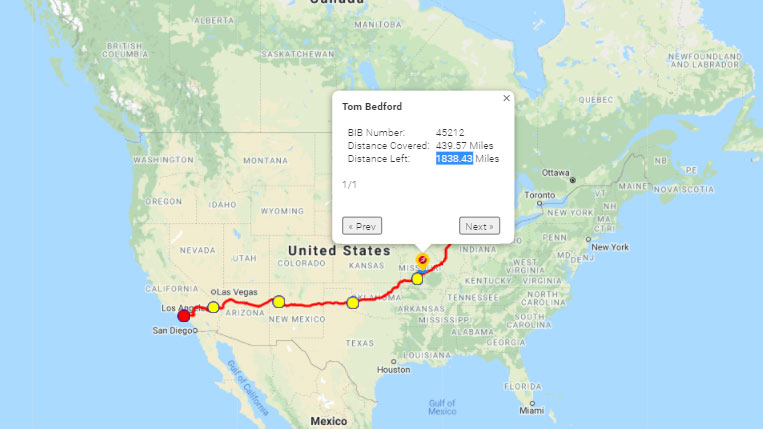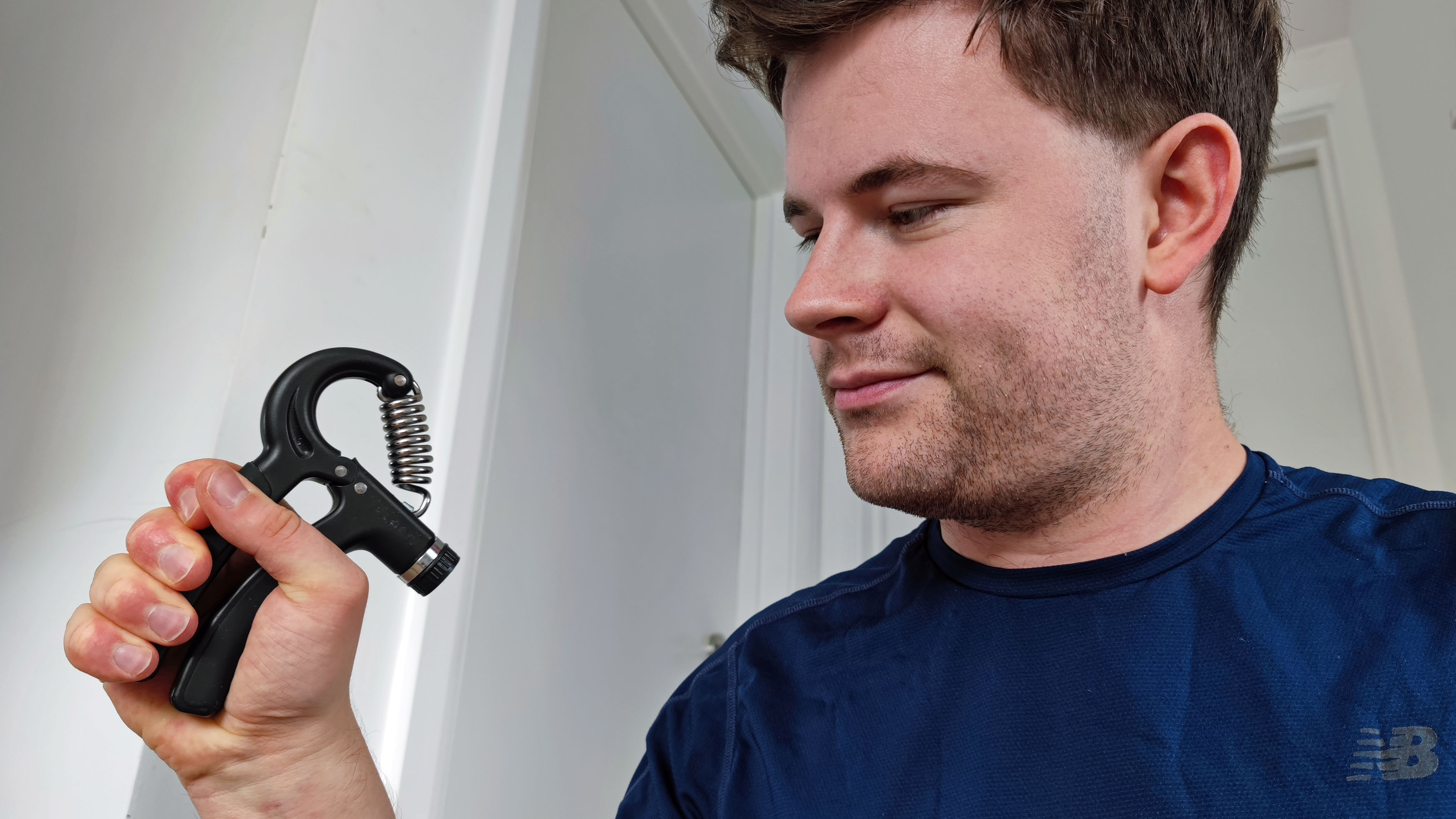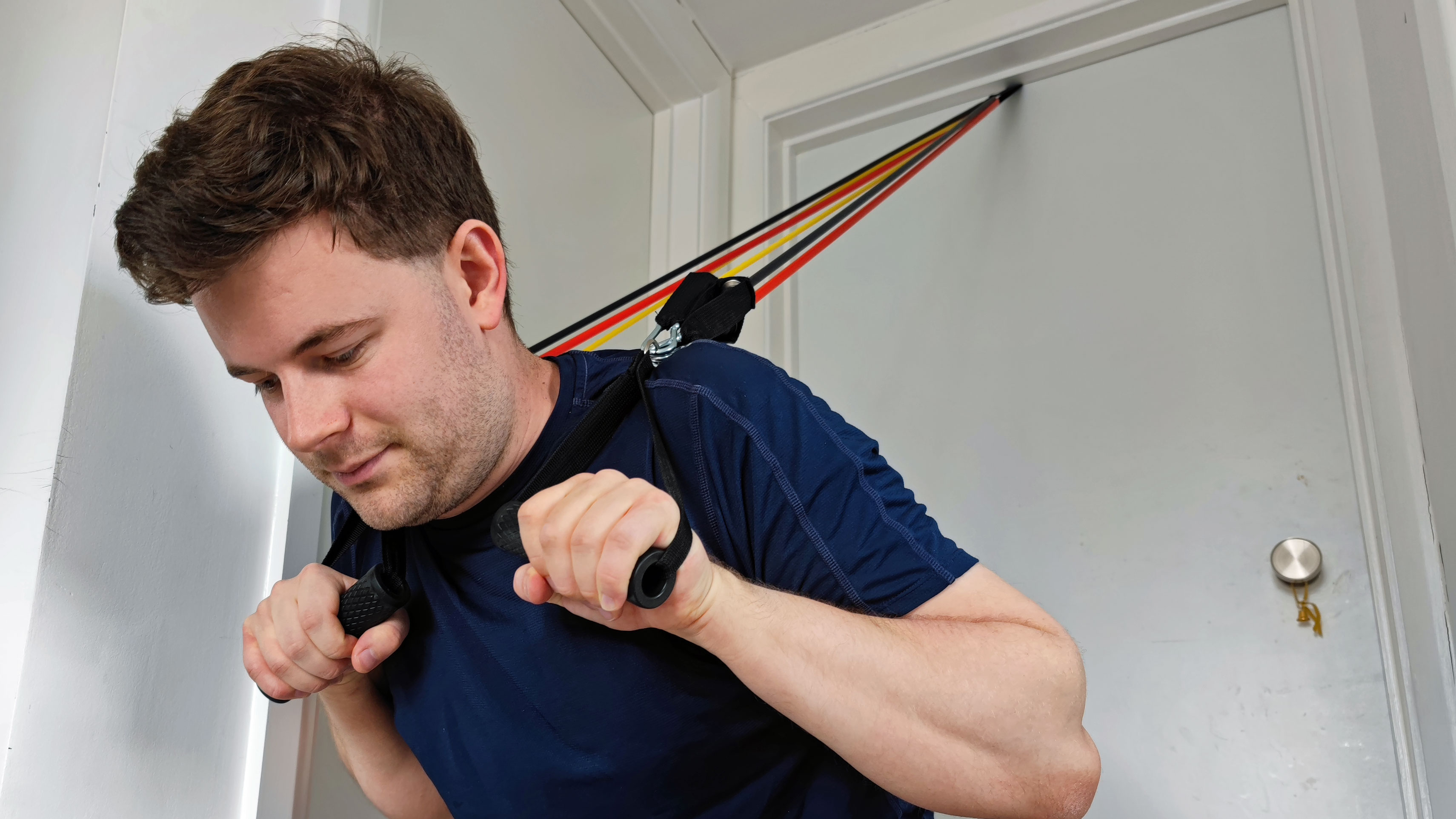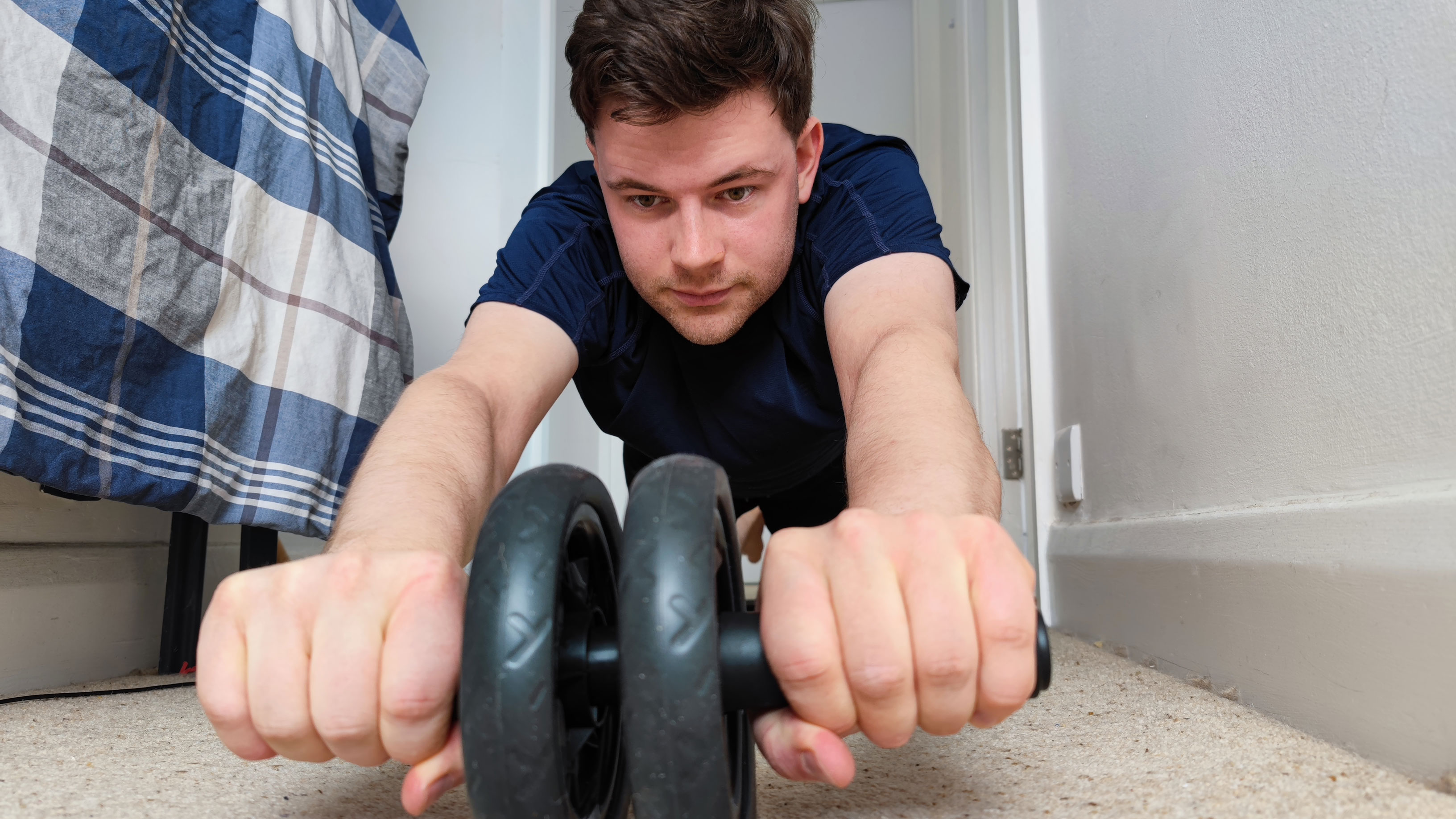Through the pandemic lockdowns, lots of people started buying workout gear for their homes: treadmills, bikes, rowing machines and the like, sold like hotcakes. But not everyone can afford fancy set-ups like that – and thankfully, the bottomless pit of junk that is 'Amazon' provides.
You see, Amazon sellers offer loads of small gadgets and gimmicky tools that promise to get you fit. Want to work out from your living room floor, or while slumped at a desk staring at screens? The website seemingly has you covered. These gadgets don't cost much, and with Prime Day 2021 coming up, are sure to get discounted to tiny levels.

Column number: 8
Date written: 15/06/21
Days in: 106
Current location: St Robert, MO
Distance traveled: 439.57 miles
Distance left: 1,838.43 miles
Current tracker: Red Magic Watch
I'm currently virtually running across America, and writing fortnightly columns for TechRadar about all the gadgets and tech I use. This adventure has me thinking about my fitness a lot more, which is why I was so excited to see all of the weird and wonderful gadgets Amazon has to get me fit.
So which of these gadgets are worth buying, do they work well if you've got a small house or limited budget, and can they actually get you fit? Instead of doing my research and looking at the testimonials of personal trainers, experts and athletes, I just decided to buy five different gadgets and work it out myself.
Each of the gadgets I bought will be judged under a few factors: it has to be easy to use, cheap, and effective. I didn't spend more than £25 (roughly $35, AU$45) on any of these things – I generally chose the cheapest I could find, so brand and build quality wouldn't be a factor in whether the kit was worthy or not. Or so I thought.
Grip strength trainer
Confession: I already owned a grip strength trainer, and my using it was what inspired me to pursue this Amazon gadget hoedown as a column idea. I bought it to improve my grip for bouldering, and I love the damn thing.
All you need to do is squeeze the thing repeatedly in one hand, and you get stronger (in theory) – you can adjust the tension, to make it harder to squeeze, and apparently it's also useful to release your grip slowly to train another type of strength.

The reason I love the grip strength trainer is that it's easy to use idly while doing something else. If I'm clicking around the web with a mouse in my right hand, my left will be squeezing. If I'm eating cheese with my left hand, the right is getting fit.
It's also a great piece of kit because it's transportable – I bring mine into the office and use it there too.
But the real question is, does the grip strength trainer actually improve your grip? Well, this clearly isn't a scientific article, but I think it does – I've found it far easier to grip on beams and hand-holds since I started using it. Unlike some of the other kit on this list, you won't suddenly start looking like a ripped bodybuilder or movie star, but it's easy to use and will affect your fitness in a small way.
Check out grip strength trainers on Amazon US / Amazon UK / Amazon AU
Power ball
In my notes when testing the gear, I kept referring to the power ball as the 'orb thing', as the name 'power ball', is about as nondescript and forgettable as it gets. My thinking behind the power ball was that, while the pull-up bar described below trained my arms and the strength trainer powered up my hands, my wrists would likely get really weedy. That's where the power ball comes in.
The power ball consists of two balls, one housed inside the other. You thread a piece of string through the inner one to wind it up, and then yank it out to get the ball spinning - if you've ever used a Beyblade you know what that's like. The inner ball spins in circles, and you're meant to rotate your wrist in circles too, to keep the ball spinning.
If that description sounds weird and confusing and you've no idea what's going on, then that's a pretty apt representation of how I felt using the thing. The power ball felt like something I was meant to throw at Pokemon to catch them, not a tool that was going to give me stronger wrists.
There's a knack to the power ball – if you rotate your wrist at the right rhythm, you keep the ball inside spinning longer, and one time I managed to do it perfectly, so the ball never stopped rotating. Unfortunately I've never been able to replicate this feat.
I've used the power ball quite a few times now, and I still don't really know what I'm meant to be doing with it. I just rotate my wrist and hope for the best. Is this exercise?
Moreover, it takes quite a while to set up (winding up the string takes half a minute or so) and the ball only rotates for about 10 seconds. It's not really time-effective. I found myself skipping the power ball and just using my wrist strength trainer instead, as it didn't take any setup and could be used repeatedly.
Check out power balls on Amazon US / Amazon UK / Amazon AU
Resistance bands

Now we're getting into the really hardcore workout stuff. Resistance bands are elasticky, rubbery bands that you pull on in various ways to train different muscles. You can stand on them and do squats, hook them to your door frame to pull down on, use them for sit-ups, and by using different combinations of the five bands provided you can make it quite tough.
When I opened up the parcel with the bands, I saw the different hand-holds and door anchors and colorful bands and thought 'this is the real deal' – coming after the orb thing, it felt like some serious exercise kit. I was ready and eager to get ripped (my body, not the bands).
But then I opened the instruction booklet and quickly lost my mind trying to work out what I was supposed to do.
Firstly, a graphic showed the bands altogether, with the label '100lbs', and next to that was another picture showing the bands in a different order, with the label '150lbs'. Does this mean If you attach the bands in a different order, there's more resistance? How does that make sense? There's no way of keeping them in the same order when attached to the hand-holds anyway!
Notwithstanding this weird science, I flipped over the instruction manual to find a list of workouts that was longer than the entire Encyclopedia Brittania – there were countless pictures of different exercises, with names in font so small I could barely read them. Each illustration consisted of just two or three small graphics, showing different parts of the exercise.
Suffice to say that, while I tried my best to follow along with the exercises shown, I had no real way of knowing if I was doing the activity right. Sometimes I could feel the 'burn' of a hearty workout, but other times it felt like I was just making myself look like an idiot. Plus, I wasn't too sure which activities to combine with which, to train the areas of muscles I was looking to develop.
I did find the resistance bands super easy to use though – they seemed sturdy, and the door anchors were effective in keeping the band attached to a door, for different types of workouts. While I had trouble finding the perfect workouts for me, I eventually did find a few ones that were convenient and worked well.
So would I recommend resistance bands? I'd give it a tentative yes – while I'm not sure I found them as effective as the grip strength trainer or pull-up bar, I actually had more fun with them, and they fit in my small flat pretty well. If you've got a personal trainer or informed friend who can show you how to use them properly, and which activities to chain together, it's a definite yes.
The bands were pretty cheap too, so your budget won't have to stretch too much.
Check out resistance bands on Amazon US / Amazon UK / Amazon AU
Pull-up bar
A piece of kit I bought recently is a pull-up bar. These are metal bars you attach between doorframes in your home, that you can do pull-ups on.
Immediately for some people there's going to be a red flag right there, as you have to rely on the structural integrity of your home to do pull-ups (and your ability to fasten the bar tight). The first few times I tried to secure it in my home, I ended up taking a tumble, and nearly removed the paintwork too. I hope my landlord isn't reading this.
You need a doorframe that gives you enough space to lift yourself high, too, so if you have a low-ceiling home you're in for a headache (literally).
Depending on where you put the pull-up bar in your home, it can be an annoying little extra you give up on using, or the singular most important component of your home gym.
That's because if you attach the thing to your doorframe, you'll have to attach and detach the thing every time you want to do some pull-ups, which quickly becomes more hassle than it's worth.
But if you find a spot in your home where you can keep the bar up all the time, it becomes much more useful, and using the bar becomes part of your everyday routine, as you can casually saunter over to it while doing something else. I'll frequently use mine while watching TV on my iPad, cooking dinner, or partaking in a work call (camera off, of course).
Since I started my 'pull-ups-when-I-can-be-bothered' fitness regime, my arm strength has noticeably improved - I've received comments pointing it out too. Result! While this is the priciest gadget I tested, I'd recommend it depending on your house layout.
Check out pull-up bars on Amazon US / Amazon UK / Amazon AU
Ab roller

Finally, we come to the ab roller – this is basically a fancy way of doing press-ups. Instead of bending your arms to go up and down, you roll this wheely-thing up and down on the floor, which is apparently better for your core.
The ab roller I ordered came in a luxury-looking black box with an insignia emblazoned on it; compared to the plastic bag the resistance bands came in, or the cheap-looking boxes that housed the power ball and grip strength trainer, this felt like class.
However alarm bells started to go off in my head when I opened the box and found the wheels were made of cheap-feeling plastic that surely couldn't support my weight. The alarm bells only got louder when I constructed the thing, and found a gap between the wheels so that they wobbled when in use – and the mental bells reached a wailing crescendo when I looked for instructions on how to use the thing, only to find instructions absent, and a link to a WikiHow article for 'how to use an ab roller' written on the back of the box instead.
Well, okay then. Expectations, meet reality.
My first problem with using the ab roller wasn't to do with the product, though, but my flat – it turns out you need lots of floor space to do a press up, and even more to use an ab roller, and my tiny central London flat didn't have much of that. I ended up having to use my flat's narrow corridor to exercise.
Despite the wobbling wheels and cheap-feeling plastic, the ab roller sufficiently held my weight, and I could complete a couple of reps without collapses. However I didn't quite like I was doing it right – these are meant to be fantastic core exercises, but it only felt like I was working on my arms.
I was a bit clueless on how to use the ab roller properly, and WikiHow's guide – well, it's WikiHow, I don't need to say more. This was largely the same reaction I had with the resistance bands, but while I had fun adapting my routines to find the best way of using those elastic worms, an ab roller provides less versatility.
So if you already know what you're doing, an ab roller could be worth buying, and using it definitely tired me out. But I've no idea if I was actually improving my core at all from using it, and the confusion and stress of using it didn't really pay off.
Check out ab rollers on Amazon US / Amazon UK / Amazon AU
So which would I recommend?
There's not a single piece of kit I bought that I straight-up regret – even the worse ones still seemed to work now and then, and given I barely paid anything for them, it was probably worth it.
If you can only buy one, though, I'll list them in my preference order so you can decide which is best for you. Remember my three factors are value, ease of use and fitness improvement.
With Amazon Prime Day 2021 taking place on June 21, it's worth waiting until then to buy the kit, as it could be discounted. And if this article has put you off all types of cheap home gym kit, and you want the real deal, that'll likely get reduced too.
- Grip strength trainer
- Pull-up bar
- Resistance bands
- Ab roller
- Power ball
from TechRadar - All the latest technology news https://ift.tt/2SHRv1S
